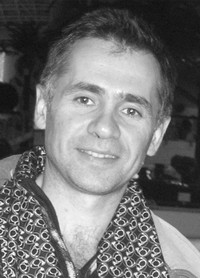WAYS TO CONTROL AND IMPROVE PHYSICAL PERFORMANCE
Keywords:
mobility of the cervical spine, blood circulation, vertebral arteries, neurohumoral regulation.Abstract
Objective of the study was to reveal the relationship between the mobility of the cervical spine and the blood circulation of the vertebral arteries, neurohumoral regulation and the physical performance of the body.
Methods and structure of the study. A group of active athletes, polyathletes, track and field athletes (23 people, 17-22 years old), qualification Master of Sports, Candidate for Master of Sports, 1 sports category, was examined. The mobility of the cervical spine (CS) was assessed, an ultrasound scan of the brachiocephalic vessels (USV) was performed; if mobility disorders of the cervical spine were detected, each athlete underwent up to three sessions of individual myocorrection: acupressure, reflex, vacuum massage of the cervical spine. Heart rate (HR) indicators during the active orthostatic test and maximum exercise testing were assessed twice before and after myocorrection.
Results and conclusions. In all cases of changes in the mobility of the cervical spine, USV confirmed various degrees of disturbance and asymmetry of blood circulation in the basin of the vertebral artery (VA). A decrease in the diameter of the vertebral artery corresponded to a decrease in the linear, volumetric blood flow velocity and was manifested by a low level of the total spectral power of HR, with the actual absence of fast regulatory elements. After myocorrection, the degree of restoration of blood circulation was confirmed by USV. The HR analysis revealed an increase in the total power of the spectrum and its redistribution to the high-frequency region. The results of load testing before and after myocorrection revealed significant differences in the efficiency of overcoming the load maximum and recovery. Violation of the mobility of the cervical spine, leading to a decrease and asymmetry of the blood circulation of the vertebral arteries, is manifested by depression of neurohumoral regulation and physical performance. Restoration of blood circulation after myocorrection improves the functional state and exercise tolerance.
References
Abdullaeva K.G.K., Akulina M.V. Osobennosti serdechnogo ritma v predstartovyy, nagruzochnyy i vosstanovitelnyy periody stress-testa [Features of the heart rhythm in the pre-start, load and recovery periods of the stress test]. Teoriya i praktika fizicheskoy kultury. 2019. No. 7. pp. 55-58.
Golubeva N.K., Petrov A.B., Shuliko Yu.V., Kalinin A.V. Vliyaniye trenirovochnoy raboty na adaptatsionnyye kharakteristiki organizma [The influence of training work on the adaptive characteristics of the body]. Teoriya i praktika fizicheskoy kultury. 2020. No. 11. 100 p.
Lapkin M.M., Trutneva E.A., Petrov A.B. Prognosticheskiy potentsial vremennógo ryada kardioritmogrammy stresstesta [Prognostic potential of the time series of stress test cardiorhythmogram]. Fiziologiya cheloveka. 2019. Vol. 45. No. 3. pp. 48-60.
Lapkin M.M., Birchenko N.S., Pozhimalin V.N. Prognosticheskiy potentsial nagruzochnoy kardioritmogrammy rannego adaptatsionnogo perioda [Prognostic potential of the load cardiorhythmogram of the early adaptation period]. Chelovek. Sport. Meditsina. 2018. No. 1 (18). pp. 46-59.
Lapkin M.M., Mikhailov V.M., Petrov A.B. Patent 2613921 RF. Sposob opredeleniya vosstanovitelnogo potentsiala u sportsmenov, razvivayushchikh aerobno-anaerobnuyu vynoslivost [Patent 2613921 RF. A method for determining the recovery potential of athletes developing aerobic-anaerobic endurance]. No. 2015137142; appl. 09.01.2015.
Lapkin M.M., Mikhailov V.M., Petrov A.B., Reksha Yu.M. Patent 2613937 RF. Sposob opredeleniya potentsialnogo urovnya fizicheskoy rabotosposobnosti pri submaksimalnom nagruzochnom testirovanii [Patent 2613937 RF. A method for determining the potential level of physical performance during submaximal load testing]. No. 2015136686; appl. 08.29.2015.
Pokhachevsky A.L., Lapkin M.M., Trutneva E.A., Melnikov D.S., Shubin K.Yu. Adaptatsionnyye mekhanizmy predelnoy rabotosposobnosti [Adaptive mechanisms of limiting working capacity]. Teoriya i praktika fizicheskoy kultury. 2021. No. 8. pp. 17-19.
Filipchenko A.I., Kulagin P.A., Pozhimalin V.N., Petrov A.B. Osobennosti formirovaniya fizicheskoy rabotosposobnosti v molodezhnoy vyborke [Features of the formation of physical performance in the youth sample]. Teoriya i praktika fizicheskoy kultury. 2022. No. 1. p. 41.

Additional Files
Published
Versions
- 28-04-2023 (4)
- 27-04-2023 (3)
- 23-04-2023 (2)
- 17-04-2023 (1)

